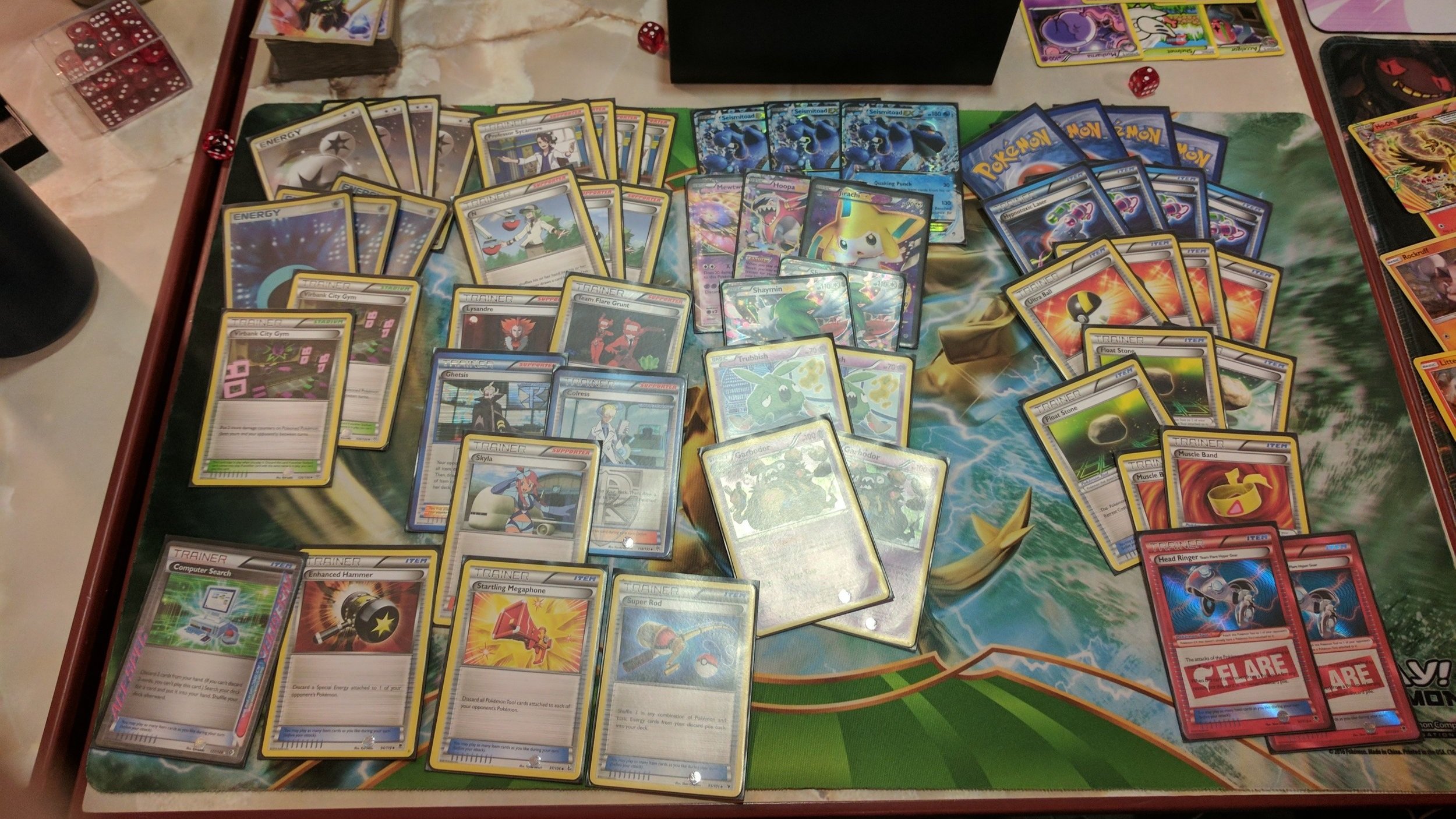Magic: The Gathering
MTG color Pie
I fell in love with competitive card games during my freshman year of college. I had played Magic before with some friends during the long summers of my high school years, but I never really invested much effort into getting better at the game. Things changed very rapidly when I walked into the basement of the Student Union on quad day, overwhelmed by the sheer number of clubs available at this University. There I found a group of guys playing the Pokémon trading card game. I watched from the sidelines for a bit until one of them invited me over and offered to teach me how to play. I’ll never forget their generosity, offering a total stranger the chance to play with their established group. A few learning moments later and an introduction to one of the group members who was staying in the same dorm as me and I had myself a brand-new hobby to sink hours and hours into while I should have been studying.
Pokemon TCG: Toad-Garb list from 2015
The Pokémon trading card game quicky became one of my favorite ways to spend downtime. Practicing and learning matchups for the next event was enjoyable but the juice, at least for me, came from competing. Now I wasn’t very good so there was very little proverbial juice, but it was the most enjoyable aspect, nonetheless. I could never place my finger on why I liked the game so much or why card games in particular captured so much of my imagination. It wasn’t until I had graduated, moved back to my hometown, and reconnected with old friends over a game of Magic that it started to click.
Card games are about variance. You start with a set deck and there are restrictions on the makeup of a deck. For instance, standard Magic the Gathering decks need to have a minimum of 60 cards in them with no more than 4 copies of the same card, basic lands excluded. Drawing off the top of a randomized deck you had no way of knowing what was coming. Playing the game often boiled down to deploying resources correctly to gain an advantage over your opponent but the step that I enjoyed the most happened off the playmats, out of sleeves, and often well before either player had flipped a coin to see who would go first. In Magic the one thing you can do to increase the odds of winning before even sitting down is constructing a deck that minimizes variance.
Now I know what you’re thinking, if you got this far you might be wondering how this relates to UX design at all. I’m almost there, bear with me.
I no longer competitively play card games. There isn’t a competitive scene here and that’s okay. I now play a multiplayer casual format called Commander where it’s you, 100 of your favorite single cards, and 3 of your friends playing to have a good time. Commander has its own restrictions and there is a social element that changes the goal of deckbuilding significantly. Competitive decks that work well to minimize variance and produce repeatable winning circumstances are works of art. Well designed and carefully curated collections of effects aimed at a specific strategy that you hope will be enough to overwhelm your opponent(s), each deck has the opportunity to do something unique. In a competitive sense, a well-designed deck will produce victory after victory. This is not always the goal though.
MTG Commander Deck List
In a casual format the goal is to have fun. Sure, we are all still playing to win, eventually, but the journey is worth more than the end goal. The definition of well-designed changes when you are designing a deck for others. The format of magic changes the way that I have to think about deckbuilding. I am not designing a deck to win the regional championships, no. I am building a deck to produce an enjoyable experience at a table full of friends. In this, I can find parallels to UX design.
In UX design, we make changes and choices to benefit the end user. If we were designing purely for mechanical execution (competitively), we would likely design in a straightforward and ruthlessly efficient app or website that disregarded the user’s experience. Nobody would have fun navigating that app or website. When the focus of the design changes to the experience of others (casual), we start to make conscious choices to include others in the mental framework of the design. Realizing this allowed me to try and build decks that are more fun for my opponents to play against. The multiplayer nature of the format means every deck has end users, every card inclusion and decision builds to a user experience.
With this in mind, UX design and Magic have a few similarities. In both, the goals are experiences that accomplish the aim of the designer while attempting to address the pain points of your end users. Where in UX, we have user research and interviews, Magic has playtesting and group discussion; in both there is the opportunity to constantly iterate on and curate a design to improve the experience of your end users. Overall, it is the conscious choice to design an experience for someone else to enjoy that brings me back to the game. It is this same philosophy that pulls me in to UX design and feeds my curiosity. What design considerations do I need for the next deck strategy? What about the next million users?



